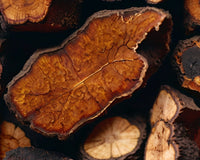The following is a list of foods containing soy.
Edamame
These soybeans are harvested while the beans are still green and sweet. They can be used as snacks or main vegetables, after being boiled in slightly salty water for 15 to 20 minutes. They are rich in protein and fiber and contain no cholesterol. Edamame can be hulled or purchased in pods in the produce section of supermarkets or frozen food aisles.
Meat substitutes
Meat substitutes containing soy protein or tofu are used to imitate meat, such as burgers, sausages, bacon and hot dogs. Generally speaking, they do not contain cholesterol and have lower fat content than meat. They are an excellent source of protein, iron and B vitamins.
miso
Miso is a rich salty soy sauce used in Japanese cuisine. The Japanese make miso soup and use miso to flavor various foods such as sauces, sauces, and marinades. Miso paste should be refrigerated. Miso contains the least soy protein and is high in sodium.
Soy milk
Soaked, ground, and filtered soybeans produce a liquid called soy milk. Original, unfortified soy milk is an excellent source of high-quality protein and vitamin B, but lacks calcium and vitamin D. However, there is also fortified soy milk.
Soy milk can be found in non-refrigerated containers or dairy boxes in supermarkets. It is also sold as a powder mixed with water.
For people with lactose intolerance, soy milk is an excellent milk substitute. It can be used as a beverage or as a substitute for milk in cooking.
Soy nuts
Roasted soy nuts are soaked whole soybeans in water and then roasted until brown. Soy nuts come in many flavors. They are rich in protein and isoflavones, and have a texture and taste similar to peanuts.
Soy sauce (soy sauce, soy sauce and teriyaki)
Soy sauce is a dark brown liquid made from soybeans that have undergone a fermentation process. Soy sauce contains the least soy protein and is high in salt.
There are two types of soy sauce: soy sauce and soy sauce. Shoyu is a mixture of soybeans and wheat. Tamari is made only from soybeans and is a by-product of miso. Another sauce that contains soy sauce is teriyaki sauce. It contains soy sauce and other ingredients such as sugar, vinegar and spices.
Tempeh
Tempeh is a thick, soft soybean product. Whole soybeans, sometimes mixed with another grain (such as rice or millet), are fermented and pressed into cakes or bars with a smoky or nutty flavor. It can be sliced, marinated and grilled, or it can be added to soups, casseroles or peppers. It can be found in Asian and health food stores.
Soy Protein
Textured soy protein (TSP) refers to products made from textured soy flour, textured soy protein concentrate and spun soybean fiber. Textured soy flour contains about 70% protein and retains most of the dietary fiber of beans. Textured soy flour is sold dry in pellets and lumps. When hydrated, it has a chewy texture. It is widely used as a meat supplement. One of the more popular brands is called Textured Vegetable Protein (TVP).
Tofu
Tofu, also known as fermented bean curd, is a soft and smooth soy product made by condensing fresh hot soy milk and coagulant. Tofu has a mild taste and easily absorbs the flavors of marinades, spices and other ingredients. Tofu is rich in high-quality protein and B vitamins, and low in sodium. There are two main types of tofu:
- There are special hard, hard and soft varieties of tofu in water. This tofu is dense and firm, and it holds well in stir-fry and soup, on the grill, or wherever you want tofu to keep its shape.
- Silk tofu has super hard, hard, soft and reduced fat varieties. This tofu is made through a slightly different process, which makes the product softer. Silken tofu works well in puree or mixed dishes.
Whole beans
When soybeans mature in the pods, they mature into hard, dry beans, similar to other beans. Most mature soybeans are yellow, but some are brown and black.
Whole soybeans are an excellent source of protein and dietary fiber. They can be cooked and used in sauces, stews and soups. Soaked whole beans can be roasted as snacks, and they are sold in natural food stores and some supermarkets. When grown without chemicals, they are called organically grown soybeans.





